“Mind Map is a unique thinking tool that will bring out your natural genius and enable you to shine in every area of your life.” – Tony Buzan.
Featured image credits: Photo by Diva Plavalaguna
This blog is about Mind Map. It is a very powerful technique with multiple uses for anyone. Its multiple uses enhance your productivity. This is my favourite technique for capturing my learnings and recalling my earlier learnings. In the past, I had shared many Mind Maps on stock investing and personal finance. You may find them here.
This is a two-part blog.
- The first part will cover the basics of Mind Maps and more about the brain. Through this, your brain understands itself and its evolution. This understanding is very essential for your brain to know that Mind Map aligns closely with its natural way of communication.
- The second part will cover the different rules to create Mind Maps.
You might also be interested to read these related articles:
What is a Mind Map
- Mind Maps is a technique that helps to learn, organize, and store as much information as required, and classify it in natural ways that give you easy and instant access (perfect memory) to whatever you want.
- It is the easiest way to put information into our brain and take it out.
- Thus a Mind Map helps to learn, remember and recall even complex subjects very easily
- We have heard that a picture worth 1000 words. However, a Mind Map is a picture that contains pictures. (So you can imagine the power of Mind Maps)
- It is a radiant (all side) thinking tool which uses both sides (Left and Right) of the brain.
- This technique allows visualizing a structure, an idea or a concept
- Most importantly, it is simple and easy to create
Who can use Mind Map?
Anyone can use Mind Maps as it has a variety of uses. Mind Mapping is used in the academic and corporate world.
- Academic world: Mind Map can be used for training. Students will find this technique very powerful for them to learn and remember complex ideas with ease. It would be really very helpful if they start using this technique at an early stage of academic life.
- Corporate world: Mind Map is used for brainstorming, idea generation, presentation, analysing complex problems, project planning and even day-to-day planning.
Below is a Mind Map of its uses
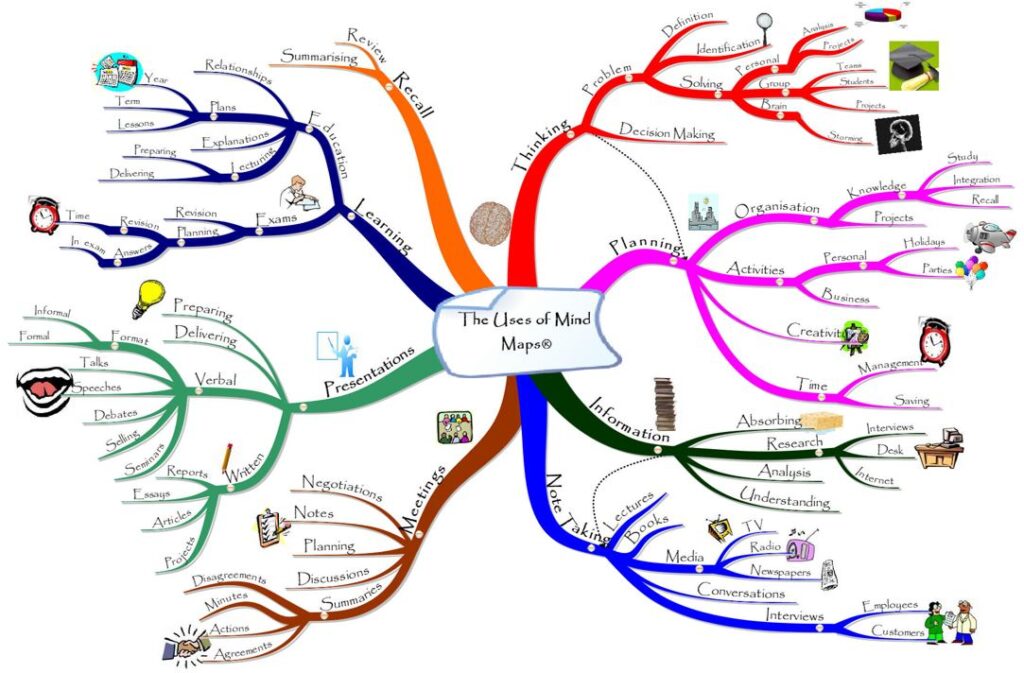
Where it all started?
This technique was pioneered by Mr Tony Buzan. It has evolved over a series of research/experiments conducted on the Human Brain. However, even as early as the 15th century, there is evidence of the use of similar techniques (Though they may not be called Mind Map). We will quickly see them.
Leonardo Da Vinci (1452 - 1519)
- He was a painter, draughtsman, engineer, scientist, theorist, sculptor, and architect.
- He used images, diagrams, symbols, and illustrations as the purest way to capture, on paper, the thoughts that were in his brain.

Charles Darwin (1809 - 1882)
- He was a Naturalist, Geologist and Biologist
- His core work was on the Theory of Evolution – Humans evolved from common ancestors
- He had to analyze 3000 species as part of this work
- Sheer volume of data was a challenge
- He had used a note-taking method similar to Mind Map

Richard Feynman (1918 – 1988)
He was a famous theoretical Physicist. His work includes
- Quantum electrodynamics
- Feynman diagrams – Pictorial representation scheme for the mathematical expressions describing the behavior of subatomic particles

Tony Buzan (1942 – 2019)
- The current day Mind Maps came into use in 1960.
- Though many people started using it in 1950, it was Tony Buzan who popularized what it is today.
- Tony Buzan is the world-renowned inventor of Mind Mapping and an expert on the brain, memory, speed reading, creativity and innovation.
- He has authored many books on the above subjects which help to utilize our brain better.
- Through over 40 years of research into the workings of the brain, Tony Buzan has developed and refined the techniques to help individuals think better and more creatively, and reach their full potential.

An Important Note:
- Most content of this blog is an extract from my reading of books by Mr Tony Buzan around Mind Map.
- The source for most of the information is from those books.
- All images used in this book are from the internet.
Teach Your Brain about Brain
A question in your mind by now could be… “Is Understanding of the Brian needed to understand Mind Maps?”, “Is the topic important and related to Mind Maps?”
The answer is “Yes”.
We use our brains every second. But how much do we know about it?
- A simple point-and-shoot camera has a 50-60 page manual on how to use it and its features. But there was never a manual for our brains.
- Your Brain’s understanding of itself is very much important to understand Mind Maps (or any other technique that helps to improve Brain effectiveness)
Let us quickly understand our Brains and its evolution in rest of this blog.
Brain Parts and Functions
Different parts of our Brain evolved in Human Evolution. The oldest is the Brain stem and the latest is the cerebrum.
- Brain stem, Controls life-supporting functions such as breathing, heart rate, body temperature etc. This evolved 500 million years back.
- Cerebellum, or hind (back) brain, which controls movements of the body in space and stores memories for basic learned responses. This evolved 400 million years back.
- Limbic system, mid-brain, critical for learning and short-term memory. This evolved 300 million years back.
- Cerebrum, covers the rest of the brain. It is responsible for a vast range of skills including memory, communication, decision making, and creativity. This evolved 100 million years back.
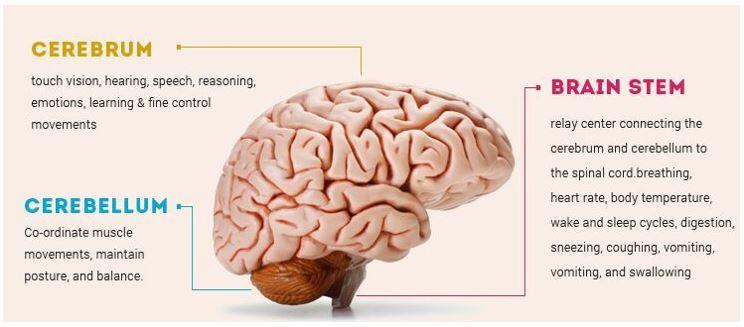
Image source: Internet.
We will need to understand a bit more about Cerebrum.
Cerebrum
- Cerebrum is the part of the brain that is used to create Mind Maps.
- It is the latest part of the brain to develop.
- If we understand how to tap into the full power of the cerebrum we can strengthen our mental and physical performance in every area of our lives.
Structure of Cerebrum
- The cerebrum is divided into two hemispheres i.e. The left and right cerebral hemispheres.
- These two hemispheres are connected by 300 million nerves (Corpus callosum).
- These nerves shuttle information back and forth between the two hemispheres.
- Each of these hemispheres is connected with different functions (This will be covered in the next blog).
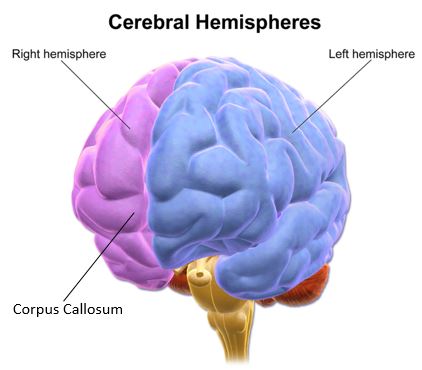
Initial Understanding of Brain
For centuries the human brain had been considered merely as a three-and-a-half pound structureless, a characterless lump of grey matter. The discovery of the microscope helped to understand the brain better. The understanding increased with the increasing power of the microscope.
- Initially it was found that the brain was composed of thousands of intricate and tiny rivers of blood that coursed throughout it, ‘feeding’ the brain.
- With the increase in the power of the microscope came the revolutionary and “revelationary” discovery that the brain seemed to be composed of hundreds of thousands of tiny dots. The nature and function of which remained a mystery for a while.
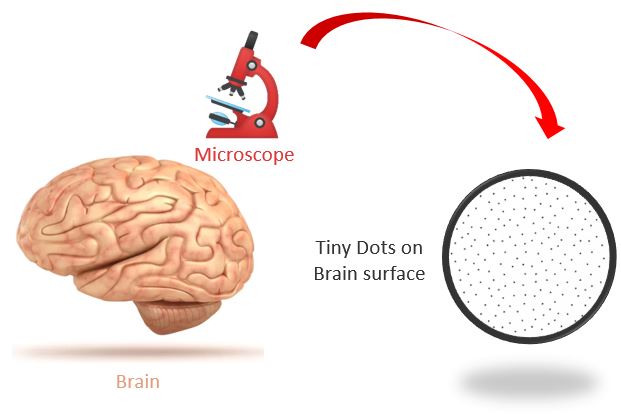
Discovery of Neurons
Then came the electron microscope in the 1930s. It gave more views about the brain. Millions of such tiny dots were identified. They were called Neurons.
- Neurons had Nuclei within it and tiny extensions (branches) emanating from them in all directions.
- This Nucleus was like Neuron’s Brain! Its power can be equated to a computer.
- This Nucleus is like a ‘Brain’ inside the ‘Neuron of your ‘Brain’.
- Imagine the power of our brain with billions of such Neurons.
- These Neurons are connected with many other Neurons in the Brain.
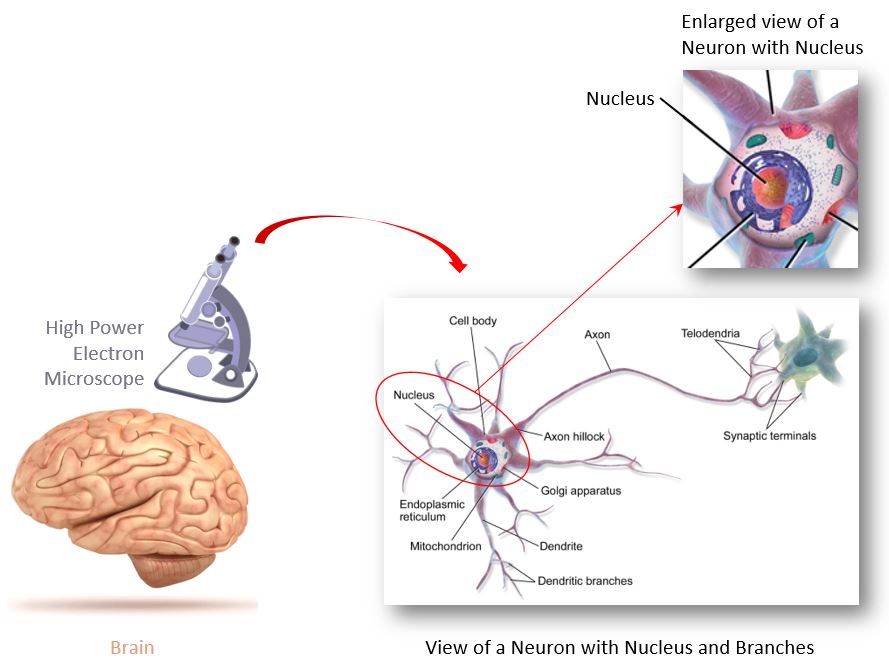
Neuron Connections
- An adult brain contains about 120 billion Neurons.
- The number of branches that connect Neurons to each other: ~100 trillion points.
- One neuron may make as many as tens of thousands of contacts with other neurons
- Neurons communicate between themselves through tiny electric pulses
How is this understanding connected to Mind Map?
Closely observe the structure of a neuron in the image below for a few seconds. Can you see any relation with the mind maps that you saw in the initial part of the blog.
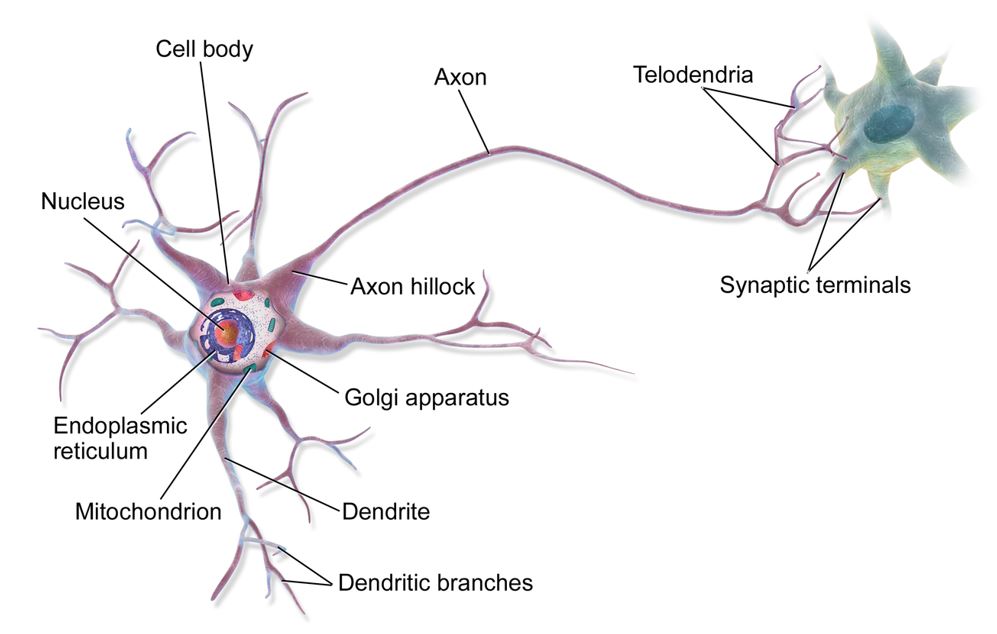
What do you feel?
- These Neurons look very much similar to a Mind Map.
- A Mind Map is similar and the natural way our brain cells/neurons communicate
Thus Brain finds very easy to understand and recall information that is presented to it in the form of a Mind map.
That is understanding by brain was very much needed to understand about Mind Maps. Your brain is now convinced that Mind Map is a powerful tool and it uses Brains natural way of communication.
In the next blog we will cover other important aspects about brain and proceed to understand the 9 rules for creating powerful mind maps.
Hope you found this blog useful. Do share my blogs with your friends, peers and fellow investors.

